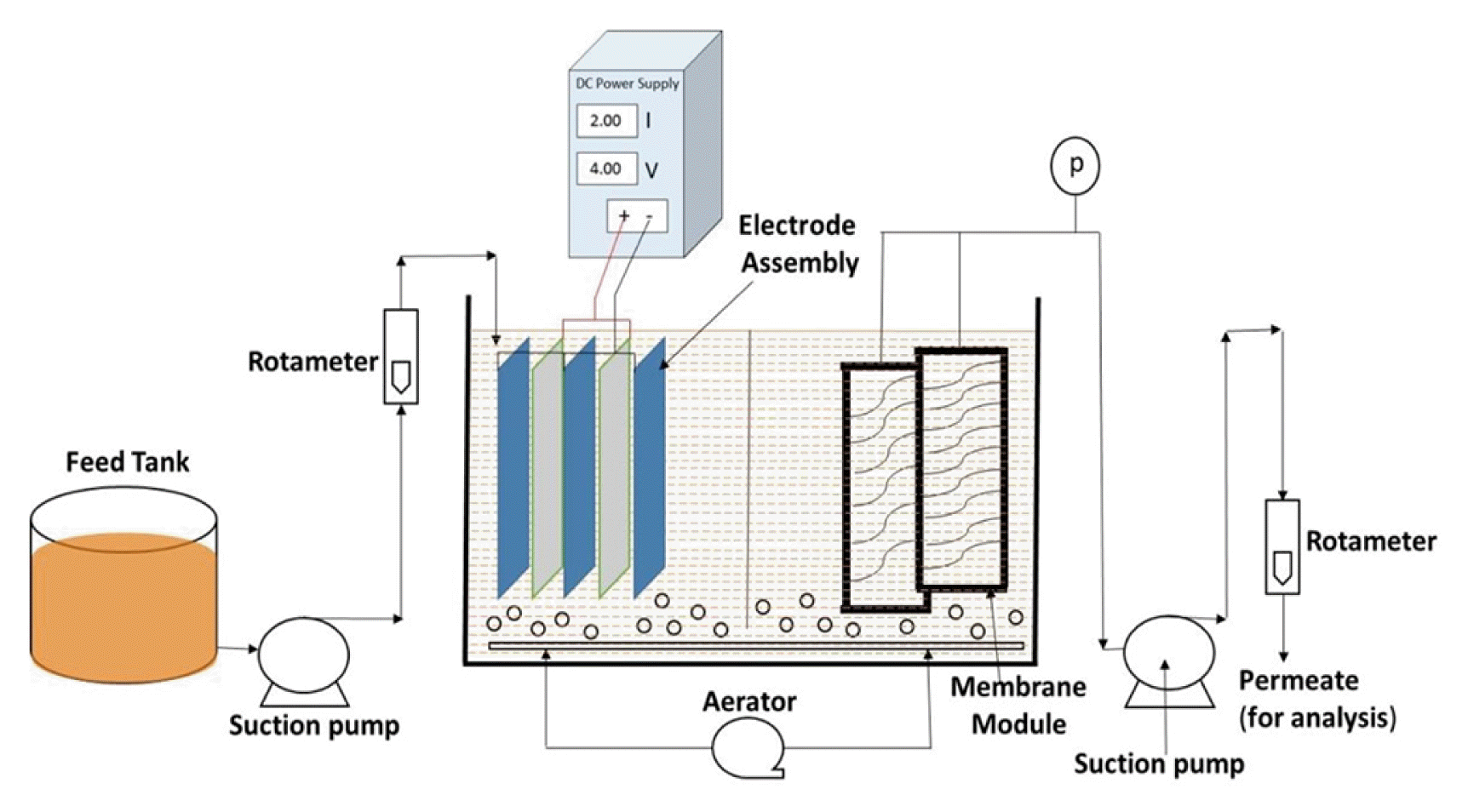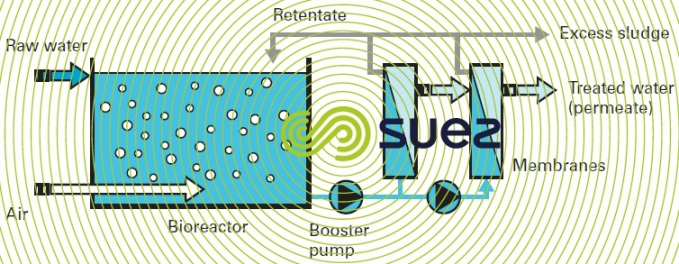Troubleshooting Common Issues with Membrane Bioreactor Systems
Wiki Article
How Membrane Bioreactors Are Changing Water Filtration Systems
The emergence of membrane layer bioreactors (MBRs) represents a considerable advancement in the area of water purification, combining biological therapy processes with innovative membrane layer filtration innovations. As international water shortage escalates, the role of MBRs in facilitating drinkable water reuse and sustainable water administration becomes increasingly vital.Review of Membrane Layer Bioreactors
Membrane layer bioreactors (MBRs) stand for a significant advancement in water purification modern technology, as they integrate biological therapy procedures with membrane purification. This combination enhances the efficiency of wastewater treatment by using microbes to deteriorate natural contaminants while concurrently utilizing semi-permeable membranes to different cured water from suspended solids and pathogens.The MBR system commonly consists of an organic activator where the microbial population metabolizes impurities, followed by a membrane layer purification device that keeps biomass and permits only clean water to pass through. This double performance causes higher effluent quality compared to conventional treatment methods. MBRs can be operated in both set and continuous circulation modes, providing flexibility in design and application.
They likewise allow the healing of water for reuse, hence adding to water sustainability efforts. Generally, MBRs are at the leading edge of improving water therapy efficiency and quality, showcasing the capacity for cutting-edge options in ecological monitoring.
Advantages of MBR Technology
The assimilation of organic therapy with membrane filtering offers many benefits for water filtration procedures. One of the primary benefits of Membrane Bioreactor (MBR) technology is its ability to properly get rid of both organic and inorganic impurities, resulting in top quality effluent. The membrane layers work as a physical barrier, avoiding suspended solids and microorganisms from passing through, which improves the total security and integrity of cured water.Furthermore, MBR systems require a smaller footprint contrasted to conventional treatment methods, enabling much more efficient space application. This compact design is especially useful in city setups where land is limited. MBRs additionally demonstrate functional adaptability, fitting varying influent qualities and circulation prices without substantial efficiency deterioration.
Moreover, the procedure offers enhanced nutrient elimination abilities, specifically for nitrogen and phosphorus, which are vital for avoiding eutrophication in getting waters. The lowered sludge manufacturing connected with MBR modern technology likewise translates to decrease disposal costs, making it a cost-effective solution in the lengthy run - Membrane Bioreactor. In general, the benefits of MBR modern technology placement it as a leading selection for innovative and lasting water filtration systems, attending to both ecological and financial worries
Applications in Water Filtration
Applications of Membrane Layer Bioreactor (MBR) technology in water filtration are varied and impactful, addressing numerous treatment requires throughout multiple industries. MBRs properly incorporate organic treatment procedures with membrane filtration, making them suitable for community wastewater treatment, industrial effluent monitoring, and also drinkable water reuse efforts.In local setups, MBRs are increasingly employed to improve the top quality of treated wastewater, enabling compliance with strict discharge regulations and helping with the recycling of water for watering and non-potable usages. Their compact style also makes them appropriate for city atmospheres where area is restricted.
Industrially, MBR innovation is used to treat procedure water and wastewater, particularly in fields such as food and beverage, drugs, and textiles. By successfully eliminating impurities and put on hold solids, MBRs aid sectors minimize ecological influences while recuperating important sources from wastewater streams.
Furthermore, MBRs are acquiring traction in decentralized water treatment applications, where small-scale systems can be deployed in remote locations or creating areas. This adaptability allows areas to accomplish lasting water monitoring options, improving accessibility to tidy water while decreasing dependence on typical treatment methods.
Situation Researches and Success Stories

In one more instance, a textile manufacturing facility in Bangladesh took on MBR innovation to resolve its wastewater challenges. The system decreased chemical oxygen need (COD) levels from 1,200 mg/L to less than 100 mg/L, hence fulfilling regulative criteria and dramatically reducing environmental effect.
The College of Cape Community's MBR installation has proven effective in treating why not try these out greywater for non-potable reuse on school. This job not only saves drinkable water yet also works as an educational model for lasting practices.
In addition, a fish and shellfish handling plant in Norway made use of MBR modern technology to deal with effluents consisting of high degrees of organic issue, accomplishing over 90% pollutant removal. These case studies underscore MBR technology's convenience and its essential role in enhancing water top quality across diverse applications.
Future of Water Treatment Solutions
As worldwide water shortage and pollution obstacles increase, ingenious water treatment options are coming to be progressively important to guarantee sustainable accessibility to tidy water. The future of water official website treatment hinges on the combination of sophisticated innovations that boost the effectiveness and efficiency of purification procedures. Membrane layer bioreactors (MBRs) are at the leading edge of this development, combining organic therapy with membrane layer purification to generate top quality effluent suitable for various applications.
Arising patterns such as resource recovery from wastewater, including nutrients and energy, will even more transform therapy facilities into green hubs. Additionally, innovations in nanotechnology and membrane layer products guarantee improved performance and long life of filtering systems.

Conclusion
Their role in potable water reuse and lasting water administration highlights their relevance in dealing with global water scarcity difficulties. Proceeded research study and development will further improve the effectiveness and fostering of MBR modern technology, guaranteeing a resilient future for water therapy services.The appearance of membrane bioreactors (MBRs) represents a considerable development in the field of water purification, combining organic therapy processes with advanced membrane layer filtration innovations. As worldwide water shortage increases, the role of MBRs in facilitating safe and clean water reuse and sustainable water monitoring becomes increasingly important. They additionally make it possible for the healing of water for reuse, thus contributing to water sustainability campaigns.As international water shortage and air pollution difficulties intensify, cutting-edge water treatment options are becoming progressively crucial to make sure lasting access to clean water. Their function in safe and clean water reuse and lasting water administration highlights their relevance in attending to worldwide water scarcity challenges.
Report this wiki page